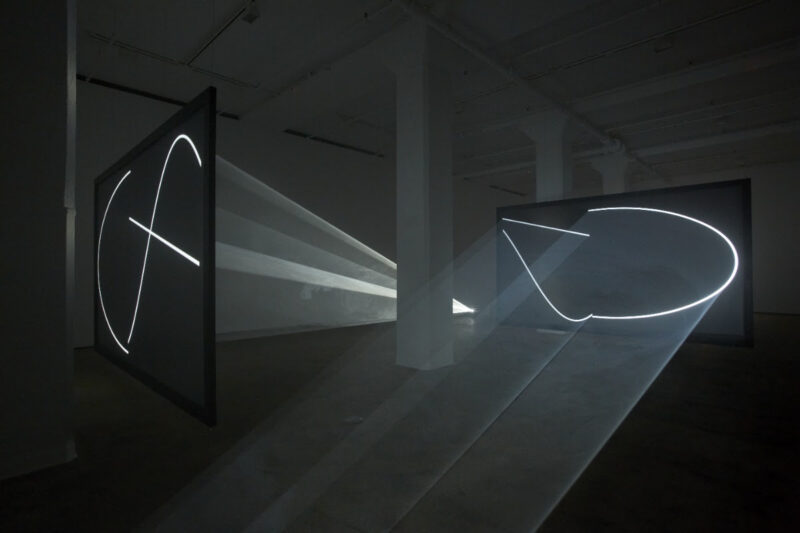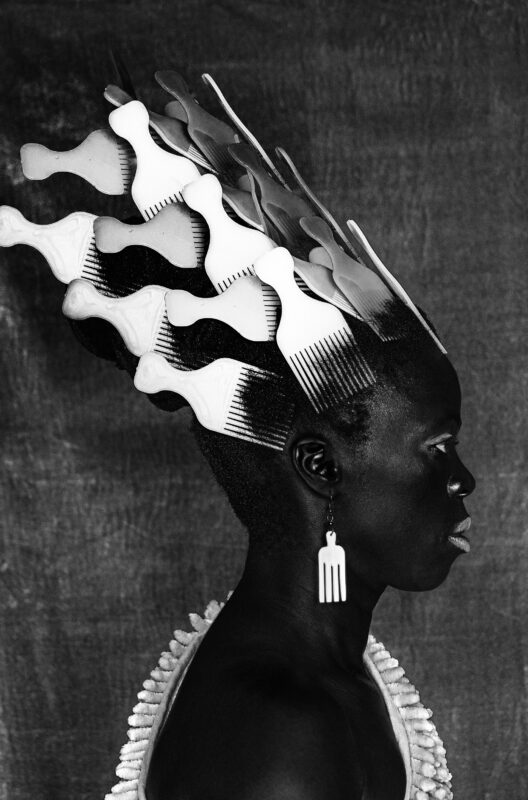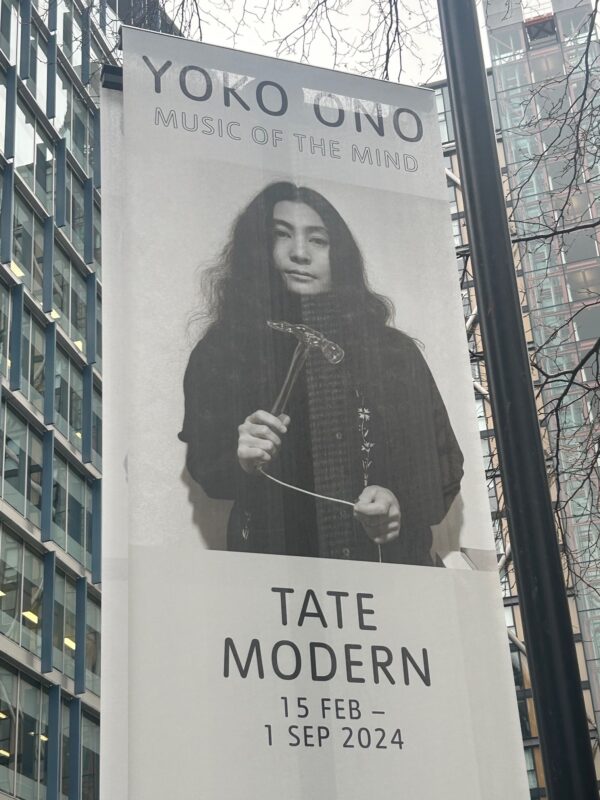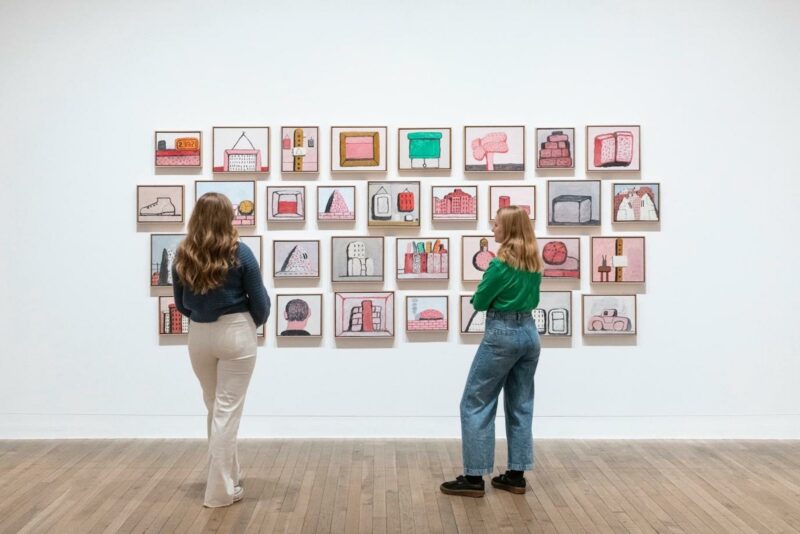![33435-310-208[1]](https://fadmagazine.com/wp-content/uploads/33435-310-2081-300x201.jpg)
Meschac Gaba was born in 1961 in Cotonou, Benin. He currently lives and works between Contonou and Rotterdam. Gaba studied at the Rijksakademie voor Beeldende Kunsten in Amsterdam (1996-7). Widely exhibited, his work appeared in Documenta 11 in 2002 and at the Liverpool Biennial in 2010. Gaba’s Museum of Contemporary African Art 1997-2002 at Tate Modern (Level 2) runs through to 22 September 2013. The exhibition is open every day from 10am – 6pm and until 10pm on Friday and Saturday. Admission is free. It is curated by Kerryn Greenberg: Curator (International Art) at Tate Modern http://www.tate.org.uk.
Review by Yvette Greslé
An imaginary museum enters Tate Modern. A monumental installation by Meschac Gaba consists of twelve rooms. Each contains objects specially constructed or found, and invites a different way of relating, and a different kind of interaction or performance (within the space of a museum). In the Museum Shop we can exchange money for commodities (from T-shirts to books). The idea of money is threaded through Gaba’s Museum most visibly in decommissioned banknotes, transformed and re-imagined. Relationships between money, commodities, marketplaces and global circuits are re-staged in installations that speak to Beninese markets, and trade routes that cross continents, oceans; and the spaces produced by technology. Of course, these relationships and these histories are not simply benign and are woven into systems of exploitation, corruption and abuse. There is a playfulness to Gaba’s Museum but it is also in dialogue with politics and power.
Gaba’s Architecture Room allows us to build our own museum or structures, out of wooden blocks. The objects I see throughout the rooms are simultaneously recognisable and unfamiliar. I recognise music tapes from a time before iPods, and the pleasure of recording and mixing music. But the tapes and the music I hear also invoke the sounds and images of markets that I visit when travelling to the African continent. The instruments laid out on the floor are not necessarily known and produce the sensations of curiosity and the impetus to learn. The Salon with music, chairs and tables invite us to relax or talk; and perhaps play the piano in the corner. On a computer is an adaptation of a game (Awélé) that any of us are invited to play. The Art and Religion Room tell a story about the relationships between visual images and belief systems that crisscross time, and geography. A Tarot reader proposes a reading; producing a space of curiosity or discomfort depending on what you believe. Objects for the purposes of worship sit alongside those that form part of the language of tourism, kitsch, and consumerism.![gaba10[1]](https://fadmagazine.com/wp-content/uploads/gaba101-300x199.jpg) The Library draws attention to different kinds of knowledge and ways of telling a story. A long wooden table invites us to read or engage in dialogue or debate. The books stacked on the surrounding shelves do not presume their audiences. Rather the selections suggest exchange or dialogue: books about contemporary African art rest alongside those about nineteenth century European painting. There are books for adults and for children; and we can read them freely. An installation constructed out of chandeliers with candles and burnt books refer to a proverb: ‘when an old person dies, it is like when a library burns down’. Oral traditions (including proverbs) are woven into the visual histories and knowledge systems that shape the African continent as a whole. Outmoded computers attached to bicycles lead us to virtual spaces that document dialogues about current practices in African art. The bicycles and the computers speak (with much humour) to the ways in which knowledge travels, is useful or becomes defunct. Nothing can be taken for granted and we adapt, move and transform with the passing of time.
The Library draws attention to different kinds of knowledge and ways of telling a story. A long wooden table invites us to read or engage in dialogue or debate. The books stacked on the surrounding shelves do not presume their audiences. Rather the selections suggest exchange or dialogue: books about contemporary African art rest alongside those about nineteenth century European painting. There are books for adults and for children; and we can read them freely. An installation constructed out of chandeliers with candles and burnt books refer to a proverb: ‘when an old person dies, it is like when a library burns down’. Oral traditions (including proverbs) are woven into the visual histories and knowledge systems that shape the African continent as a whole. Outmoded computers attached to bicycles lead us to virtual spaces that document dialogues about current practices in African art. The bicycles and the computers speak (with much humour) to the ways in which knowledge travels, is useful or becomes defunct. Nothing can be taken for granted and we adapt, move and transform with the passing of time.![gaba11_0[1]](https://fadmagazine.com/wp-content/uploads/gaba11_01-300x199.jpg) In the Library we can sit alongside a coffin and listen to an account based on imagination and story-telling: Gaba imagines his dead father’s voice as he tells us about his son’s journey as artist, and their relationship. In 1996 Gaba left his home in Benin to study at the Rijksakademie in Amsterdam. Listening to the imagined voice of Gaba’s father is a moving and poignant experience that we all, as human beings, facing our own mortality (and the mortality of those we love) can relate to. It is also an installation within a larger whole that constructs a narrative about what it is to be an artist working in the world today. Travel, leaving home and migration is an accepted part of the experience of being an artist, a curator, a scholar or a writer. Art practices produce sites of exchange and dialogue across the globe; and these exchanges take place in-between countries and continents. The art world (as a sphere of circulation, exchange and intellectual life) cannot function as a world demarcated by borders and rigid boundaries. In the Marriage Room Gaba again invites us into a private world; his marriage at the Stedelijk Museum in Amsterdam. Personal objects such as wedding photographs, a video of the ceremony, gifts and the bride’s dress speak to how art, life and the experience of being human are connected and interwoven.
In the Library we can sit alongside a coffin and listen to an account based on imagination and story-telling: Gaba imagines his dead father’s voice as he tells us about his son’s journey as artist, and their relationship. In 1996 Gaba left his home in Benin to study at the Rijksakademie in Amsterdam. Listening to the imagined voice of Gaba’s father is a moving and poignant experience that we all, as human beings, facing our own mortality (and the mortality of those we love) can relate to. It is also an installation within a larger whole that constructs a narrative about what it is to be an artist working in the world today. Travel, leaving home and migration is an accepted part of the experience of being an artist, a curator, a scholar or a writer. Art practices produce sites of exchange and dialogue across the globe; and these exchanges take place in-between countries and continents. The art world (as a sphere of circulation, exchange and intellectual life) cannot function as a world demarcated by borders and rigid boundaries. In the Marriage Room Gaba again invites us into a private world; his marriage at the Stedelijk Museum in Amsterdam. Personal objects such as wedding photographs, a video of the ceremony, gifts and the bride’s dress speak to how art, life and the experience of being human are connected and interwoven.
As a student at the Rijksakademie, Gaba was struck by how African art was presented, curated and imagined in the museums he visited. Museums filled with images and objects of ethnographic and anthropological interest; the pillages of war (or the idiosyncratic individual curiosity of collectors) detached African objects from their context, their rituals and their meanings. Objects such as masks (made for the purposes of ritual and animated performance) sit immobile and removed from the sounds, bodies, audiences and embellishments for which they were produced. The glass cabinets of the traditional museum display suspend these objects in time refusing them circulation, movement and transformation. Like every other part of the world, visual practices across the African continent shift and change over time: there are histories about twentieth and twenty-first century art (produced across the African continent) that counter assumptions about what African art is, and can be.
Gaba’s Museum, in its entirety, stages questions that go to the heart of tensions that continue to circle African Art. ‘Africa’ is too often a hold-all for many different kinds of visual practices that emerge out of a continent as vast and complex as any other. Gaba’s Museum states what should be taken for granted. It disrupts the idea that African visual practices are simply about the production of cultural artefacts, which are imagined via the circuits of tourism, anthropology, and museums. There are innumerable artists, curators, collectors and scholars working in the arena of contemporary African art. But depending on who is looking and speaking they risk invisibility. Gaba’s Museum of Contemporary African Art stages a number of questions: What is contemporary African art? Where are the museums for contemporary African art? What does this art look like? Are categories such as ‘African’ valid? Are categories and labels necessary? Who decides what contemporary should be and what it should look like?![gaba9[1]](https://fadmagazine.com/wp-content/uploads/gaba91-300x225.jpg) In a Financial Times article titled ‘Africa’s bright glare’, Jackie Wullschlager writes about Meschac Gaba and Ibrahim el-Salahi at Tate Modern. She begins: ‘Name an African artist. Name two more. It’s a struggle: African art still has the most minor presence in the world’s museums, biennales, galleries. And when we do see it, too often it lacks the context for us to make sense of it’. This paragraph is emblematic of the space into which Gaba inserts his Museum. Wullschlager’s space makes numerous assumptions: about the identity of the ‘we’; and about the meaning of the ‘world’. It erases the existence of countless curators, scholars, writers and artists. She quite simply imagines that they do not exist. Wullschlager inserts herself into an arena that is highly charged, deeply political and finely tuned to the nuances of language and its violence. Earlier this year, writing about Trade Routes, a group exhibition at Hauser & Wirth she similarly erases the importance of the work and the identities of the artists concerned referring to them as ‘non-white’. The artists she refers to are reduced to the category of a non-person and a category that cannot exist without an imagined skin. A skin that is ‘not white’. How do artists categorised in this way feel about this reduction and this erasure? I suspect that in this case their voices and their practice as artists were considered secondary to the matters at hand: how to deal with the perplexing problem of that which appears strange, different and impenetrable.
In a Financial Times article titled ‘Africa’s bright glare’, Jackie Wullschlager writes about Meschac Gaba and Ibrahim el-Salahi at Tate Modern. She begins: ‘Name an African artist. Name two more. It’s a struggle: African art still has the most minor presence in the world’s museums, biennales, galleries. And when we do see it, too often it lacks the context for us to make sense of it’. This paragraph is emblematic of the space into which Gaba inserts his Museum. Wullschlager’s space makes numerous assumptions: about the identity of the ‘we’; and about the meaning of the ‘world’. It erases the existence of countless curators, scholars, writers and artists. She quite simply imagines that they do not exist. Wullschlager inserts herself into an arena that is highly charged, deeply political and finely tuned to the nuances of language and its violence. Earlier this year, writing about Trade Routes, a group exhibition at Hauser & Wirth she similarly erases the importance of the work and the identities of the artists concerned referring to them as ‘non-white’. The artists she refers to are reduced to the category of a non-person and a category that cannot exist without an imagined skin. A skin that is ‘not white’. How do artists categorised in this way feel about this reduction and this erasure? I suspect that in this case their voices and their practice as artists were considered secondary to the matters at hand: how to deal with the perplexing problem of that which appears strange, different and impenetrable.
Gaba’s installation doesn’t claim to have all the answers to the questions he poses. This in itself counters the assumption that everything can be explained, analysed and categorised; or indeed that it should be. At no point in the Museum is there an attempt to shut down debate. These are spaces that anyone can freely enter (there is no charge) and nothing in the installations themselves excludes. Gaba’s Library does not reproduce a dogma that places Africa and the West in opposition to one another. Rather it searches for points of connection, sharing and dialogue. While this is an ideal (given the ongoing prejudices and conflicts of the world we live in) it is at least an imaginative attempt to consider something else. Even if this attempt is temporary it speaks to art as a space for reflection and imaginative possibility.
Exhibition closes 22 September 2013 http://www.tate.org.uk.
This exhibition marks Tate’s acquisition of the Museum of Contemporary African Art 1997-2002. Promised gift of the artist and acquired with funds provided by the Acquisitions Fund for African Art supported by Guaranty Trust Bank plc 2013.
I refer to Jackie Wullschlager. ‘Critics Choice’, Financial Times May 4/5 2013, p.15 and ‘Africa’s bright glare’, Financial Times, July 5 2013 (available on-line).
All images shown here courtesy of Tate Modern: Meschac Gaba, Museum of Contemporary African Art 1997-2002 © Meschac Gaba









